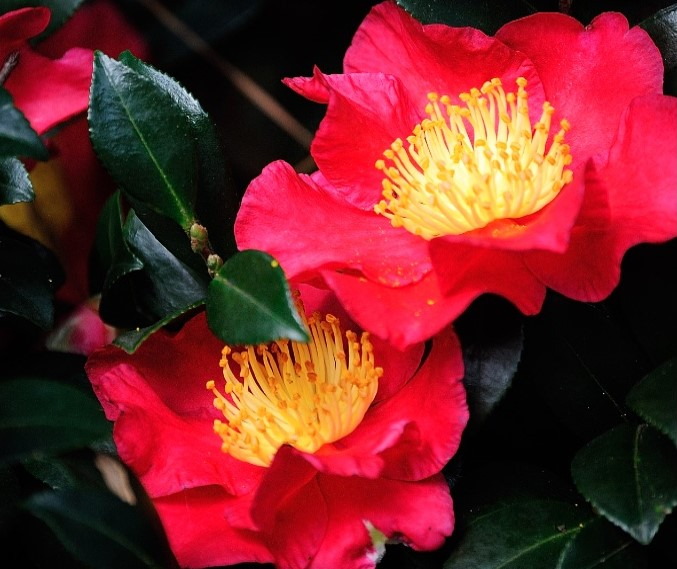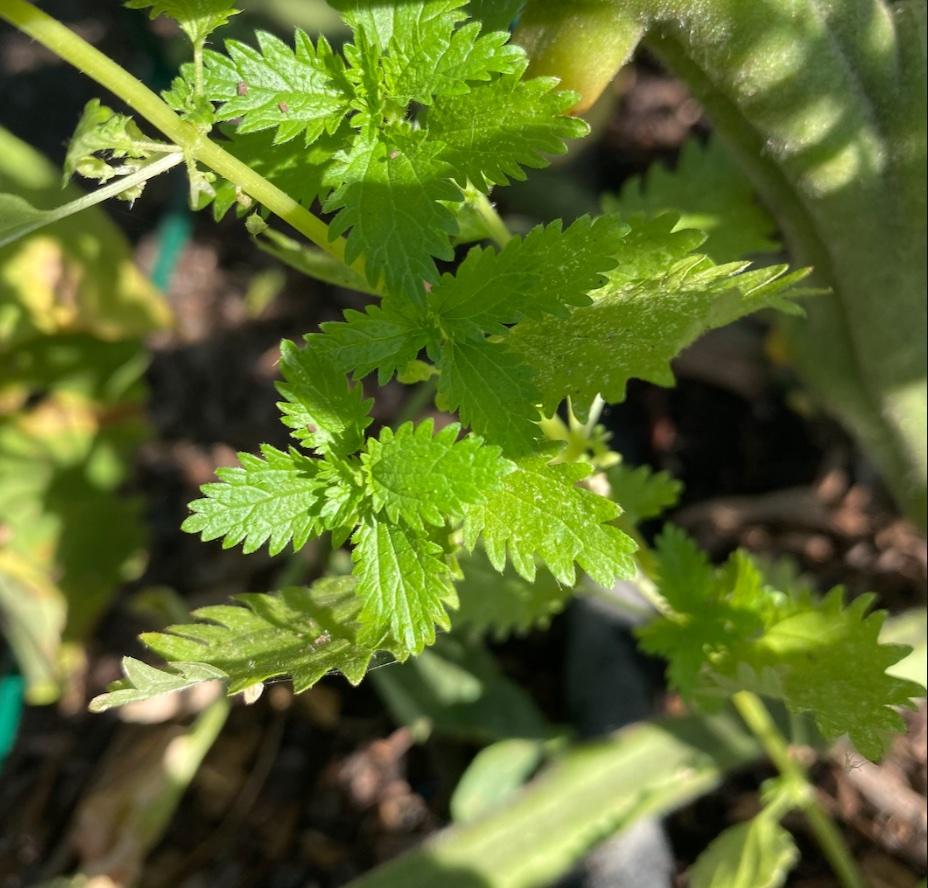Do you have a gardening question? The Master Gardeners of Santa Clara County can help. Our volunteers are part of the University of California’s Cooperative Extension program and we are trained to use research-based information to educate our fellow residents on sustainable gardening and landscaping practices specifically for our area.
Our monthly "Ask a Master Gardener" column will answer your questions and offer tips. Have a question? Email lifestyle@embarcaderopublishing.com or leave a comment at the end of this month's column.
How can I use plants to decorate for the holidays, beyond poinsettias?
Poinsettias are traditional, but there are many other ways to use plants to decorate for the holidays, both inside and outside your home.
Yuletide camellia: red blossoms
Camellias, with their glossy green leaves and brilliant blossoms, are in bloom in December. The Yuletide camellia (Camellia sasanqua) is especially stunning, with bright red blossoms and yellow centers. The best time to purchase them is now, when nurseries are offering camellias in their full blooming glory and you can choose the shape and color you like. Plant them in areas sheltered from full sun and drying winds and in well-drained, acid soil. Mature plants are water wise and drought tolerant and only need watering once a week in the summer, or not at all.
California holly: bright red berries
Another outdoor plant that brightens a landscape this time of year is toyon (Heteromeles arbutifolia), also known as Christmas berry or California holly. This California native is a large evergreen shrub with glossy dark green, serrated leaves and bright red berries that provide food for birds during the winter. It’s also lovely in the summer, with clusters of small white flowers. This drought tolerant plant grows well in a variety of soil types, if the planting area drains well in the winter.
Cylcamen: candy-cane-like stripes
It’s hard to resist the cheerful cyclamen (Cyclamen persicum) blooming right now, in shades of white, red, pink and even candy-cane-like stripes. You can decorate with them as a houseplant (just keep them away from heat vents and keep soil moist) or choose varieties sold in nurseries for long-lasting outdoor color. Outdoor varieties will bloom until late spring and do best in well-drained soil rich in humus and located in areas of dappled (not heavy) shade among trees and shrubs. They are moderately drought-tolerant, very long-lived, and thrive with very little care.
Amaryllis: bright, tropical blooms
A potted amaryllis (Amaryllis) plant makes a wonderful gift this time of year, blossoming indoors into lush tropical flowers. These exotic trumpet-shaped blossoms come in a variety of colors including pink, red, white, maroon, salmon and bicolored with two to six flowers per stalk. More correctly called Hippeastrum it’s a great bulb for growing indoors if you can’t wait for your outdoor bulbs to bloom in spring. Here are tips on amaryllis care and blooming.
Christmas Cactus: deep red flowers
Christmas cactus (Schlumbergera bridgesii) is popular during the holidays because of its deep red flowers on long stems and can be enjoyed both indoors and outdoors. Plant it in pots (hanging containers show off its trailing nature) during the summer but move it inside in the fall. When you do, keep it away from heat sources like vents and fireplaces. Christmas cactus needs its sleep – it requires thirteen hours or more of continuous darkness each day before flowering will occur. Streetlights or indoor lighting can disrupt the required dark period, causing a lack of flowering.
Shooting Star Hydrangeas
Here’s an option to add winter-white elegance to holiday tables. Some nurseries often sell spectacular Shooting Star Hydrangeas, with stunningly beautiful bursts of tiny white flowers on thin stems that shoot above a larger white cluster and glossy leaves below. These have been forced to bloom in the winter – but with care you can transplant them outdoors in the spring. Here’s more on hydrangeas.
Rented Christmas trees
If you’re planning on decorating a Christmas tree this year, how about renting one instead of buying a cut tree? Our City Forest is offering live trees that you can pick up between now and Dec. 21 and return between January 4 and 13. This sustainable alternative to cut trees means the tree will continue to thrive long after the holiday season ends. Here’s how to rent a tree.
December Gardening Tips
• Ouch! Watch out for burning nettles (Urtica urens) or stinging nettles (Urtica dioica) among your flowers or vegetables: You’ll know they are there if you brush against them and immediately feel a burning or stinging sensation. Remove them as soon as they appear, using gloves for protection. A thick layer of mulch or cover crops with dense canopies can help suppress germination. More information: Burning & Stinging Nettles.
• Protect soil: Areas of the garden that are not actively planted still need protection to support soil life and prevent soil erosion. Cover crops are one option. Mulches hold in moisture, moderate soil temperature, and help prevent weeds from germinating. Unlike rocks and synthetic mulches, organic mulches like leaves, wood chips or straw slowly break down, feed beneficial soil organisms and add nutrients. A few inches of compost will slowly work into the soil, amending it with organic matter. Manure from herbivores can be spread over the top of the soil. Even fresh manure, which could burn plants if applied directly, can be used over a bare area to decompose and be ready for the next planting season. More Information: Keep Your Soil Healthy
• Take care of dormant fruit trees: If you've had major pest infestations on your fruit trees this year, now is a good time to use dormant oil sprays. These are used to reduce overwintering populations of insects. They work by smothering soft-bodied insects and eggs when applied at the proper times in the life cycles of the pests. See our Fruit Tree and Vine Care Calendar for more information.
Do you want to ask a UC Master Gardener about a plant problem? Submit questions to our Help Desk via email. Find garden events and classes here.
You can also subscribe to our monthly Tips and Events newsletter and to our seasonal ==I Thyme to Garden blog. ==
San Mateo residents can also find gardening advice on the UC Master Gardeners of San Mateo and San Francisco website.
Find archived columns here:
• What you need to know about planting bare-root fruit trees
• Now that fall is here, what should I plant?
• What happened to my bougainvillea plant?



Comments